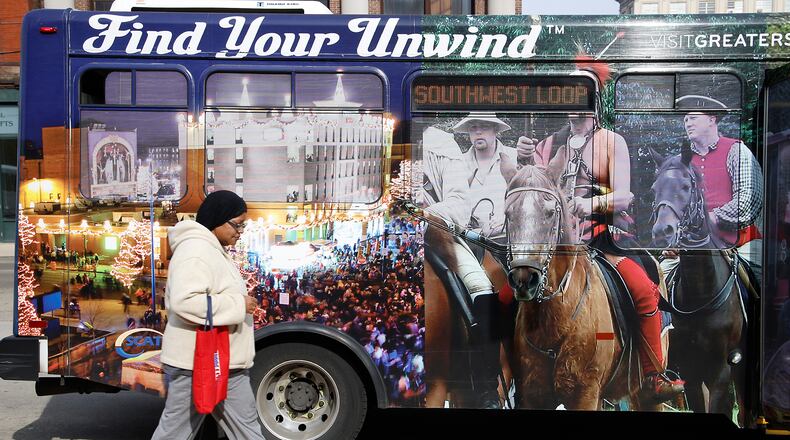“We’ll be using minivans to provide a service that increases equity and accessibility to get riders closer to where they want to go in a more timely way,” Via said.
The new system will be a mashup of “Uber meets public transit” and is expected to roll out in the summer of 2024, he said.
Credit: Bill Lackey
Credit: Bill Lackey
The city will use $1,643,600 of a federal grant matched with $673,400 in city funding to do it. Officials are also seeking a state grant that will add another $122,415 to support transit operations.
Transit users will be able to schedule by phone, internet and app. They will be able pay in cash and digitally and will be able to track their ride once it’s dispatched for pick-up.
The system will direct riders to a pick-up point nearby, and the service will then deliver them to a drop-off point convenient to their destination.
“It can’t quite be door-to-door due to safety concerns,” Via said, “but it will be a major improvement, especially in terms of time.”
Advance scheduling will also be offered, adding to flexibility of use by riders counting on public transit.
“For example,” Via said, “people who have a regularly scheduled doctor’s appointment can book a standing appointment up to a year out to know their transit needs will be covered.”
Wheelchair accessibility will continue for the disabled or injured, and service hours will be expanded.
We have a new transit service coming next year! We are working to provide the community with a streamlined, "New Way to...
Posted by City of Springfield, Ohio - Government on Tuesday, November 7, 2023
Transit service currently is available from 6:30 a.m. to 6:30 p.m., according to Via, who said the hours will expand to 11 p.m.
“That will enable us to coordinate with businesses to offer employees group transport home after their shifts,” he said. “Our service hours will be available over all three typical work shifts. We expect ridership to grow significantly.”
He also points to the possibility of businesses booking transit services for meetings or conferences, reducing the costs associated with multiple employees driving individually. Similarly, schools will be able to use transit services for small groups of students rather than dedicating a full-size bus to service.
Via points to reduced costs and a smaller environmental impact as additional positives.
“Running diesel buses 12 hours a day adds to cost. Using smaller, more fuel efficient vehicles will reduce cost of operation and offer benefits to the climate.”
The city will continue to partner with Transdev, formerly known as First Transit Inc. to provide services. Current drivers will be retained, and jobs may be added as services are expended in response to increasing demand expected to result from more convenient services.
“The bus service we’ve had has been useful and served its purpose for 60 years, but times have changed, the city and outlying community have changed,“ Via said. “We’re excited this is going to help so many people.”
The city has a Frequently Asked Questions page on its site to help explain the changes.
The city also is asking residents to complete a survey about the changes. The survey is available in English, Spanish and Haitian.
About the Author

